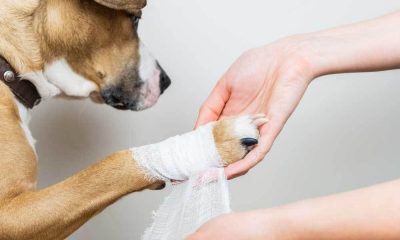Pets
Urinary Incontinence in Dogs: Causes and Treatment
Urinary incontinence in dogs is a very common condition. It is usually caused by a medical problem, and your dog is probably unaware of what is going on. Although it can occur at any age, it is more frequent in middle-aged to elderly canines and females. The severity might range from little leaks to huge amounts of urine voiding.
Causes of Urinary Inconsistence in Dogs
Pets can be incontinent for various causes, including brain and spinal cord problems that affect bladder function, birth anomalies, and sickness. Because the muscles that keep urine in the bladder weaken as dog’s age, they may become incontinent.
In young dogs, loss of bladder control is caused by a congenital abnormality called an ectopic ureter. Pee is carried from the kidneys to the bladder by the ureters, and if one or both ureters skip the bladder and flow to the wrong spot, the puppy may leak urine.
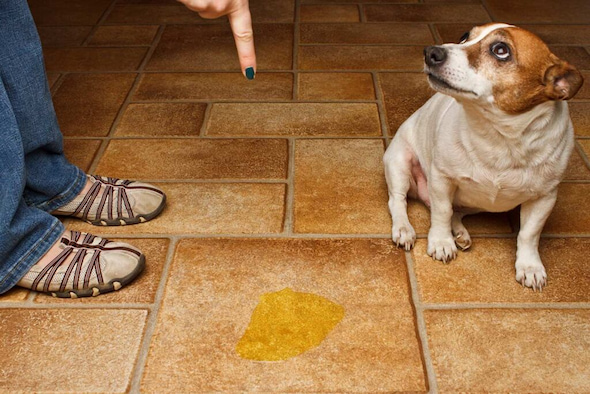
Hormone-responsive incontinence occurs in both sexes of neutered dogs but most typically in female dogs. In their middle the to late twenties, spayed female canines are prone to “spay incontinence.” This is a kind of incontinence that is frequently caused by low estrogen levels, resulting in a decrease in muscle tone in the urethra. A weak bladder can cause incontinence in rare situations. Weak bladder sphincter incontinence is the medical term for this ailment, and it is the most prevalent cause of urine incontinence in female dogs that have been spayed.
Dogs suffering from brain or spinal cord disorders may drip pee or be unable to pass urine. Other symptoms of nervous system disorders, such as muscular weakness or paralysis, are common. Senior pets may develop senility and be unaware that they are leaking pee. As a result, they may leave a wet puddle where they rest. However, this is totally out of your dog’s control, and punishing them for such things would not benefit anyone. This can lead to stress and confusion, which sometimes complicates matters.
Diagnosis Of Urinary Inconsistence in Dogs
Loss of bladder control should not be confused with illnesses or infections that cause a pet to urinate regularly. The tests used to examine a pet with incontinence are determined by their age and clinical indications. Before rendering a diagnosis, your veterinarian should thoroughly evaluate your dog’s history and do a physical examination. Your vet should do a urinalysis, blood tests, ultrasound, urine culture, and radiography to get more info on your dog’s condition.
These tests can assist in determining the underlying reason and the best treatment options for your dog. A urinalysis might reveal that your dog has a bladder infection. Another option, such as blood testing, is required to rule out underlying conditions like diabetes or Cushing’s disease. Urinary stones can be ruled out using radiographs, while tumours or bladder development can be ruled out with ultrasounds. Also, blood testing can reveal signs of kidney damage caused by infection or the presence of illnesses that may cause higher urine output.
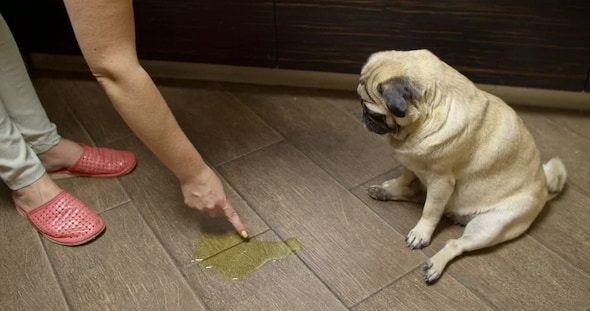
If your dog has a hormonal imbalance, your veterinarian may offer hormone treatment. Estrogen supplementation is another possibility, and your veterinarian may prescribe estrogen-based drugs like estriol. These drugs deliver a very low amount of estrogen in many dogs to enhance urethral tone and reduce urine incontinence. And while female dogs should be given estrogen, male dogs with urinary incontinence are given testosterone.
Treatment of Urinary Inconsistence in Dogs
The greatest approach to support the health implications of urine incontinence is through medical therapy. Using Propalin for dogs is one of the several methods for managing the consequences of your dog’s incontinence. Propalin is a clear, colourless liquid that comes in 30ml or 100ml bottles of syrup. And, because your pet’s weight determines the dose, make sure you get the right prescription from your veterinarian before buying Propalin for dogs.
Propalin is prescribed when the underlying cause of incontinence is urethral sphincter mechanism incompetence (SMI). The most prevalent cause of acquired urine incontinence is urethral sphincter mechanism incompetence (USMI), which most usually affects middle-aged spayed female canines. Passive urine leaks are more common when the dog is sleeping or reclining. Several etiologies, such as diminished urethral tone, bladder caudal displacement, a shorter urethra, hormone insufficiency, or obesity, have been postulated to explain this complicated condition.
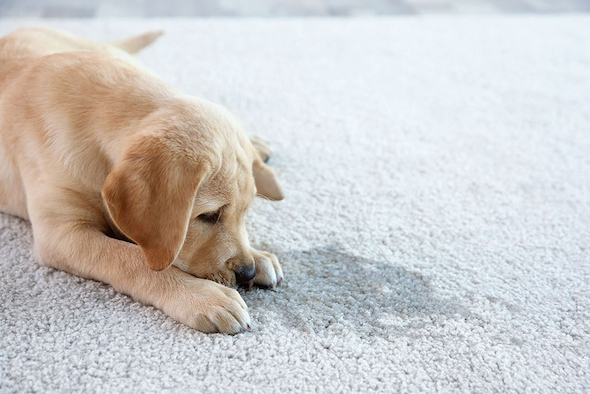
Propalin includes phenylpropanolamine, which activates the neurons that regulate the urethra and causes it to seal more tightly, limiting urine leakage. Propalin is only effective in neutered dogs and is ineffective in cases when underlying behavioural issues cause loss of bladder control. This type of medical treatment is often lifelong.
In general, Propalin for dogs is a safe product, nevertheless, routine blood pressure monitoring should be undertaken to test for hypertension, and additional care should be taken before administering phenylpropanolamine to animals with behavioural issues. Concurrent use of NSAIDs, reserpine, or tricyclic antidepressants can raise the risk of hypertension. If somehow abnormal high blood pressure levels are detected, treatment with an alternative drug should be considered.
Other Ways to Help Your Incontinent Dog
Besides the conventional medical treatment, there are a variety of products that are particularly designed to make the lives of incontinent pets and their owners simpler. As an example, consider absorbent bedding. It’s more sanitary, simpler to clean, and will cause less discomfort to your dog because it pushes the pee away from their skin. Incontinence pads for dogs are also available.
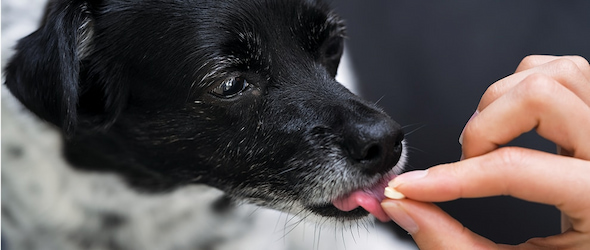
These waterproof beds keep messes at bay by preventing absorption. This allows you to effortlessly wipe away the urine while also extending the life of the mattress. Some smaller beds can be washed altogether, although machine-washable covers are more practical. This is a must-have feature for incontinent pets because spot washing is ineffective at removing stains and smells.
Every morning, wash and dry your dog’s rear legs to remove any signs of urine and minimise discomfort. Give your dog lots of chances to relieve themselves, as you should take them outside as often as possible.


